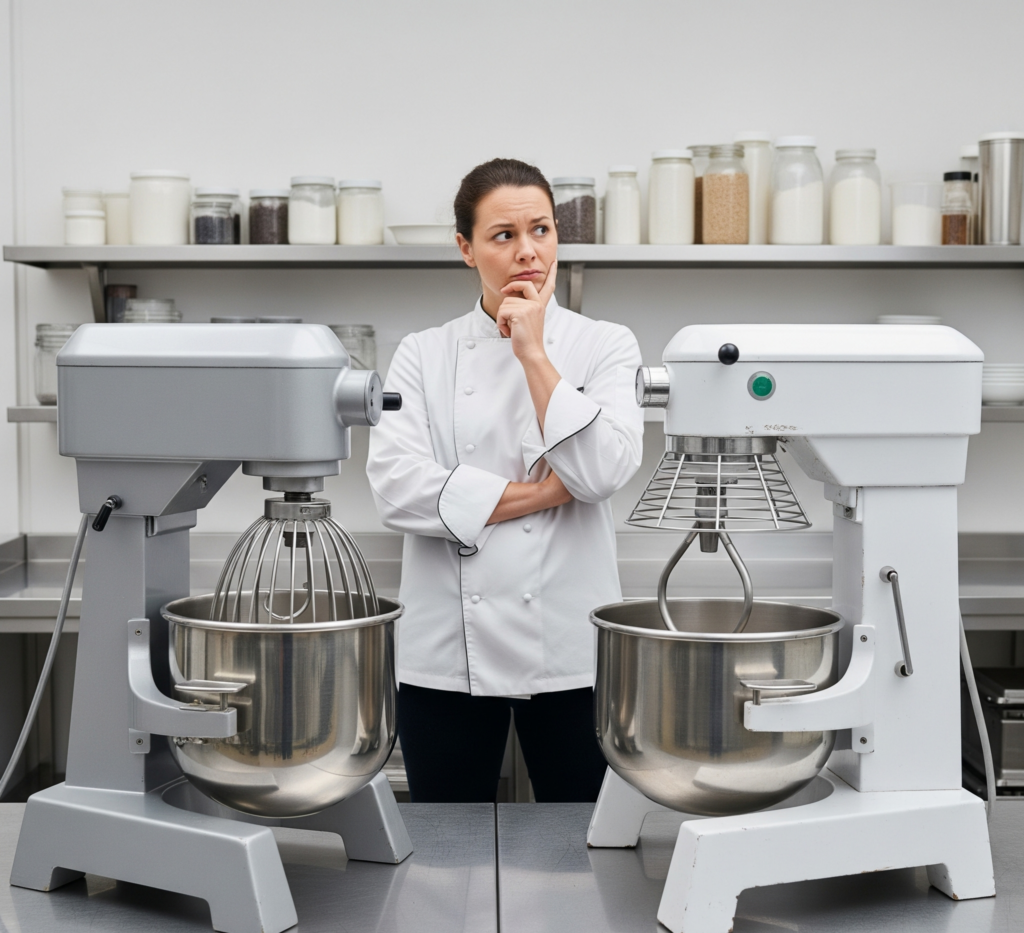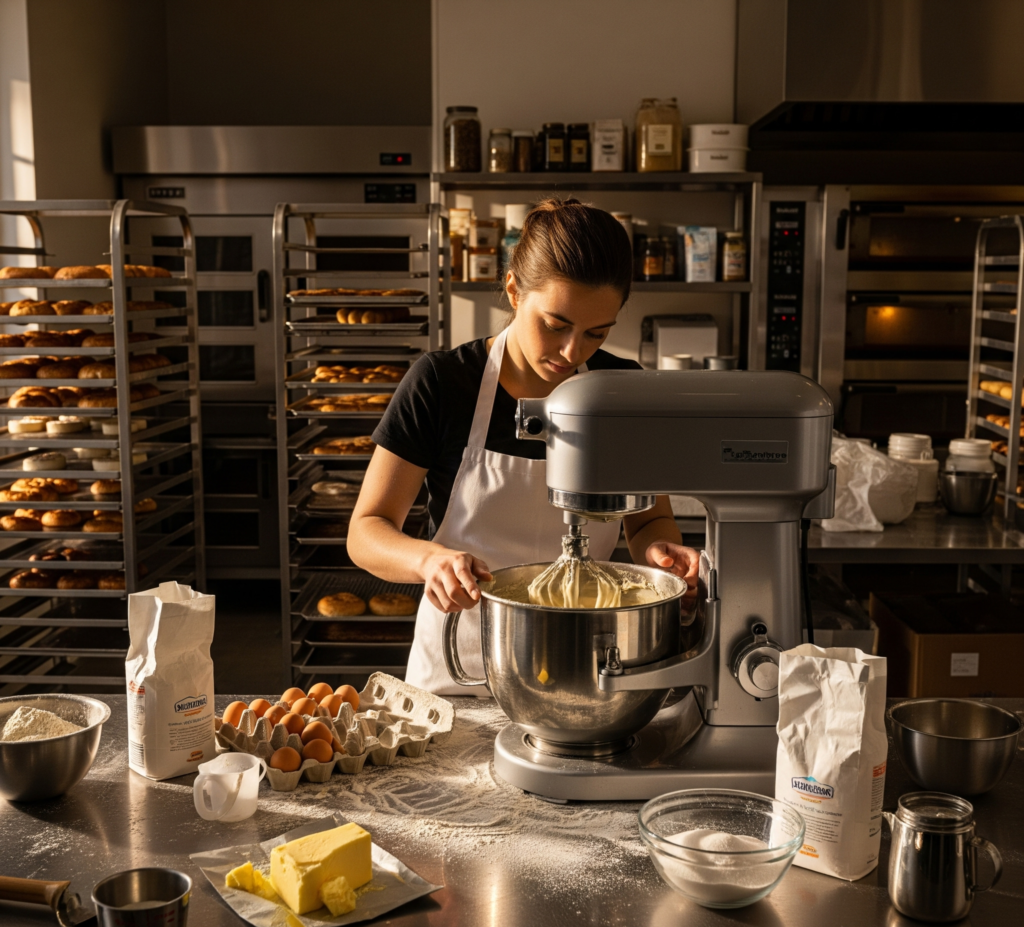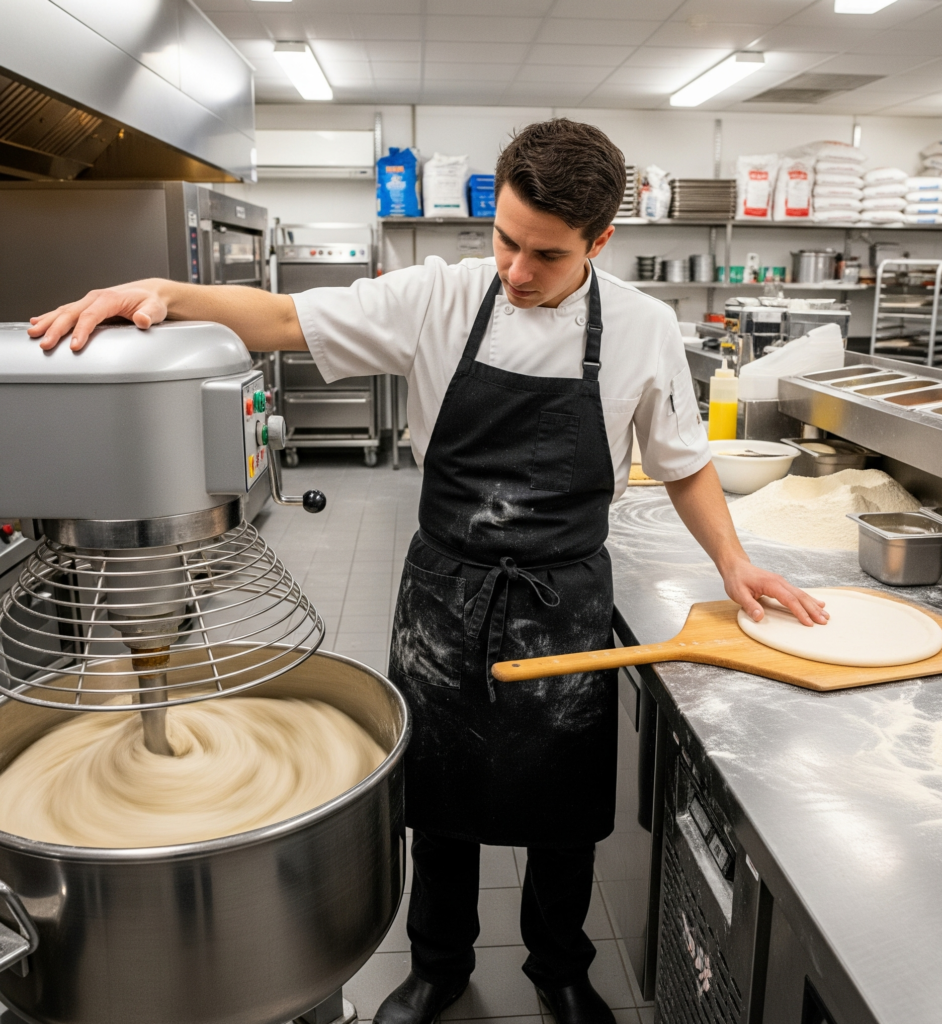Planetary vs Spiral Mixer: Which is Best for Your Business?

Choosing the right mixer is crucial for the efficiency and quality of your baking or food production business. Whether you’re running a bakery, pizzeria, or industrial kitchen, the right mixing equipment can make all the difference in consistency, speed, and product quality.
Two of the most common commercial mixers are the planetary mixer and the spiral mixer. But which one is best for your business?
Let’s break down the differences, advantages, and ideal use cases of each to help you make an informed decision.
What is a Planetary Mixer?

A planetary mixer, also known as a vertical mixer, is named for the way its mixing tool rotates — both spinning on its own axis and orbiting around the bowl, , much like planets orbit the sun.
Key Features:
- Versatile: Can be used for mixing dough, whipping cream, or even blending sauces.
- Attachments: Compatible with different tools like a dough hook, beater, and whisk.
- Bowl Sizes: Available in various capacities, making it suitable for both small cafés and large restaurants.
Best For:
- Bakeries making cakes, batters, creams, and low-hydration doughs
- Restaurants and catering services with diverse menu items
- Businesses requiring flexibility in mixing
What is a Spiral Mixer?

A spiral mixer is specifically designed for dough mixing. Unlike the planetary mixer, the bowl rotates while a spiral-shaped hook kneads the dough. This design is more gentle and efficient for gluten development.
Key Features:
- Efficient Dough Mixing: Provides consistent, high-quality dough.
- Gentle on Ingredients: Preserves gluten structure, essential for bread and pizza.
- Large Capacity: Suitable for bakeries and pizzerias producing dough in bulk.
Best For:
- Pizzerias focusing on high-volume dough preparation.
- Artisan bakeries specializing in breads.
- Large-scale food production units.
Planetary Mixer vs Spiral Mixer: Side-by-Side Comparison
| Feature | Planetary Mixer | Spiral Mixer |
| Versatility | High – can mix dough, batter, creams | Low – mainly for dough |
| Mixing Action | Tool spins and orbits | Bowl rotates with spiral hook movement |
| Dough Capacity | Lower – not ideal for large dough loads | Higher – designed for bulk dough |
| Heat Generation | Higher – can overheat dough | Lower – keeps dough cool |
| Gluten Development | Moderate – not ideal for artisan bread | Excellent – great for bread and pizza |
| Maintenance | Generally easier to clean | Slightly more complex due to mechanism |
| Cost | Usually less expensive | Generally more expensive |
Which Mixer is Best for Your Business?

Choose a Planetary Mixer If:
- You need one machine for various mixing tasks
- You operate a small to medium bakery or food business
- You focus on cakes, cookies, icings, or low-volume doughs
- You need multiple attachments (paddle, whisk, hook)
Choose a Spiral Mixer If:
- You specialize in bread, pizza, or dough-heavy products
- You work with large batches of dough
- You need consistent mixing with strong gluten development
- You want to reduce dough temperature for better fermentation
Final Thoughts
Both planetary mixers and spiral mixers are valuable additions to a professional kitchen. The right choice depends on your menu, production volume, and budget. A planetary mixer offers unmatched versatility, while a spiral mixer is the gold standard for dough preparation.
By investing in the right stainless steel commercial kitchen equipment, you ensure efficiency, consistency, and long-term durability for your food business. At Muskan Equipment Co., we offer a wide range of top-quality planetary and spiral mixers to suit your needs.
